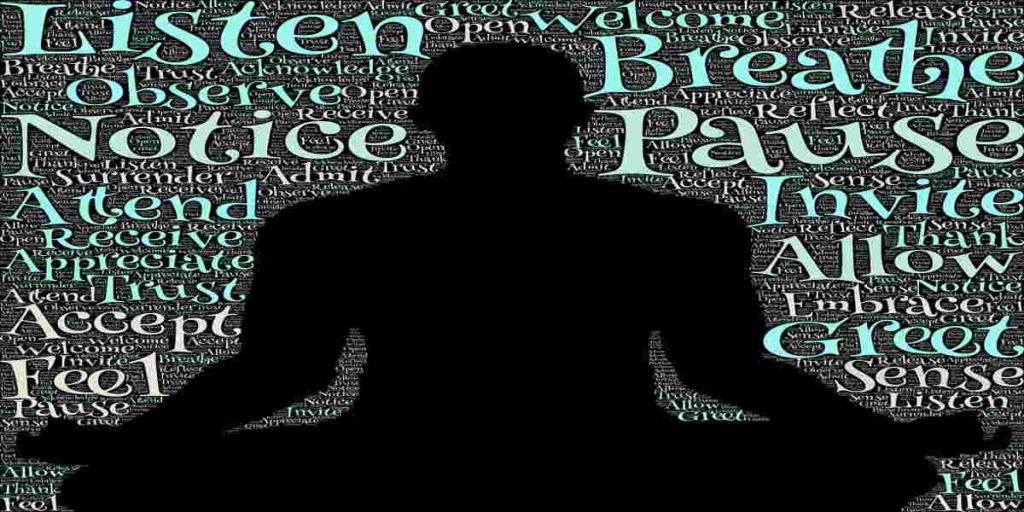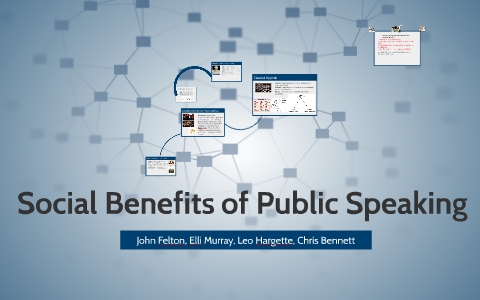Breathing Exercises for Presentations
Breathing exercises can enhance presentation skills by reducing anxiety and improving focus. In today’s fast-paced and competitive world, effective communication is crucial.
Whether you are giving a speech, presenting a proposal, or leading a meeting, mastering breathing techniques can help you calm your nerves, increase your confidence, and deliver a more compelling presentation. By incorporating simple breathing exercises into your pre-presentation routine, you can control your breathing patterns, regulate your heart rate, and relax your body, resulting in a clear mind and a confident demeanor.
We will explore various breathing exercises that can benefit you in your presentations and elevate your public speaking skills to new heights. So, let’s dive in and discover the power of breath for successful presentations.

Credit: www.breathwrk.com
Why Breathing Exercises Are Important
Breathing exercises are essential for presentations as they help in reducing anxiety, improving focus, and enhancing overall delivery. By incorporating these exercises, speakers can achieve better control over their breath, allowing them to speak with confidence and clarity.
When it comes to giving a presentation, managing your nerves and projecting confidence are key. One effective technique to achieve this is through breathing exercises. Incorporating breathing exercises into your presentation routine can help you reduce anxiety and nervousness, and improve your voice projection.
Reduce Anxiety And Nervousness
Feeling anxious or nervous before a presentation is natural, but letting these emotions overpower you can hinder your performance. Breathing exercises help to calm your mind and body, and alleviate such anxiety and nervousness. Deep breathing, in particular, can activate the body’s relaxation response, reducing the levels of stress hormones.
- Breathing from your diaphragm, expanding your abdomen as you inhale, and exhaling slowly and fully, can help center your focus and bring a sense of calm to your body and mind.
- By consciously controlling your breath, you can slow down your heart rate, which in turn reduces feelings of panic and stress.
- Deep breathing exercises can also improve oxygen flow to your brain, bringing clarity and increased mental alertness.
Improve Voice Projection
In addition to calming your nerves, breathing exercises can greatly improve your voice projection during presentations. A controlled breath not only allows you to speak more clearly and confidently, but also strengthens your vocal cords and enhances the resonance of your voice.
- Diaphragmatic breathing engages your diaphragm, the muscle responsible for controlling the volume and strength of your voice.
- By taking deep breaths and filling your lungs fully, you create a strong breath support that enables you to speak with greater volume and power.
- When you project your voice effectively, you command attention and convey a sense of authority, making it easier for your audience to engage with and understand your message.
Remember, incorporating breathing exercises into your preparation routine can make a significant difference in your presentation delivery. By reducing anxiety and nervousness, and improving voice projection, these exercises can help you confidently convey your message to your audience.
Breathing Techniques For Presentations
Delivering presentations can be nerve-wracking, causing anxiety and stress, which can negatively impact your performance. One effective way to overcome these challenges is by incorporating breathing techniques into your preparation routine. By practicing specific breathing exercises, you can control your nerves, improve focus, and project confidence during presentations. In this article, we will explore two essential breathing techniques for presentations: Diaphragmatic Breathing and Square Breathing. Let’s dive in!
Diaphragmatic Breathing
What is Diaphragmatic Breathing?
Diaphragmatic breathing, also known as deep breathing or belly breathing, is a technique that involves using your diaphragm muscle to control your breath. This technique promotes relaxation, reduces stress, and provides a focused mindset for presentations.
How to practice Diaphragmatic Breathing:
- Find a quiet and comfortable space to sit or stand.
- Place one hand on your belly, just below your ribcage, and the other on your chest.
- Inhale slowly through your nose, allowing your belly to rise as deeply as possible. Feel the breath expanding down into your abdomen.
- Exhale gently through your mouth, feeling your belly falling inward.
- Repeat this deep breathing pattern for a few minutes, focusing on the sensation of your breath filling your belly.
Square Breathing
What is Square Breathing?
Square breathing, also known as box breathing, is a technique commonly used to regain composure and focus during high-stress situations. By controlling the length and pace of each breath, square breathing helps regulate your body’s response to stress, allowing you to maintain a calm and composed state during presentations.
How to practice Square Breathing:
- Take a moment to find a quiet and comfortable position.
- Inhale deeply for a count of four seconds, filling your lungs with air.
- Hold your breath for a count of four seconds.
- Exhale slowly and completely for a count of four seconds.
- Hold your breath for a count of four seconds before starting the cycle again.
By incorporating diaphragmatic breathing and square breathing techniques into your presentation preparation, you can enhance your overall presence, reduce stress, and improve clarity of thought. Remember to practice these techniques consistently to reap the maximum benefits. Stay calm, focused, and confident, and watch your presentations soar to new heights!
Benefits Of Diaphragmatic Breathing
When it comes to delivering a successful presentation, one of the often-overlooked aspects is the importance of proper breathing. Diaphragmatic breathing, also known as belly breathing, is a technique that can significantly enhance your performance. This form of breathing engages the diaphragm muscle, which separates the chest and abdominal cavity, resulting in deeper, fuller breaths. In turn, this approach offers several benefits, including increased oxygen intake and a relaxed mind, which I will dive into further in this article.
Increases Oxygen Intake
Diaphragmatic breathing is an effective method for increasing the amount of oxygen your body receives with each breath. As you engage your diaphragm and draw air deep into your lungs, you allow for a greater oxygen exchange during respiration. This not only improves the functioning of your respiratory system but also ensures that your brain and muscles receive an ample supply of oxygen.
Relaxes The Mind
The act of consciously focusing on your breath and practicing diaphragmatic breathing also has a tranquilizing effect on the mind. By making your breaths slow, deep, and deliberate, you shift your focus away from any nervousness or anxiety that may be present. This steady rhythm of breathing sends a signal to your brain that you are in a calm and relaxed state, leading to a clearer and more composed mindset.
In addition, engaging in deep diaphragmatic breathing activates the body’s natural relaxation response, triggering a decrease in heart rate and blood pressure. By tapping into this relaxation response, you can effectively manage any pre-presentation jitters, allowing you to maintain a steady and confident presence.
Overall, incorporating diaphragmatic breathing into your presentation preparation can significantly enhance your performance by increasing oxygen supply to your body and calming your mind. By implementing this beneficial technique, you can stand out as a confident and composed speaker, captivating your audience with ease.

Credit: www.healthline.com
Benefits Of Square Breathing
When it comes to presenting in front of an audience, it’s natural to feel a bit nervous or anxious. However, there are effective techniques that can help you calm your nerves and enhance your focus. One such technique is square breathing. Square breathing, also known as box breathing or four-square breathing, is a simple breathing exercise that helps regulate your breath and bring a sense of calm and focus to your mind and body. In this article, we’ll explore the benefits of square breathing and how it can assist you in delivering confident and composed presentations.
Calms Nervous System
Square breathing is an excellent technique that helps to calm your nervous system, which is essential when facing a daunting presentation. By consciously controlling your breath, square breathing activates your parasympathetic nervous system, triggering a relaxation response. This technique allows you to slow down your breathing and lower your heart rate, reducing feelings of anxiety and stress.
Enhances Focus
Another significant benefit of square breathing is its ability to enhance focus. This technique involves a specific breathing pattern of inhaling, holding the breath, exhaling, and holding again, all for an equal count of time. This rhythmic pattern helps to regulate the flow of oxygen to your brain, improving concentration and mental clarity. By incorporating square breathing into your presentation routine, you can ensure that you stay focused and present throughout your delivery.
In addition to calming your nervous system and enhancing focus, square breathing offers several other advantages. It helps improve emotional regulation, promotes better sleep, and provides a sense of grounding and centering. With these benefits in mind, incorporating square breathing into your presentation preparation can greatly contribute to your overall performance. So take a moment before your next presentation to practice square breathing, and experience the positive impact it can have on your confidence and composure.
Incorporating Breathing Exercises Into Your Presentation Routine
When it comes to delivering a successful presentation, incorporating breathing exercises into your routine can greatly enhance your performance. Breathing exercises not only help to calm your nerves and reduce anxiety, but they also contribute to better vocal projection and overall body language. In this article, we will explore two key aspects of incorporating breathing exercises into your presentation routine: the pre-presentation warm-up and techniques to practice during the presentation.
Pre-presentation Warm-up
Before you step on stage, it’s essential to prepare your mind and body for the presentation ahead. Engaging in a pre-presentation warm-up routine that includes specific breathing exercises can help you find your center and establish a sense of calmness. Consider incorporating the following techniques into your warm-up:
- Deep Breathing: Take a moment to sit quietly and take several deep breaths. Inhale deeply through your nose, allowing your abdomen to expand, and exhale slowly through your mouth. Focus on filling your lungs with as much air as possible, and feel a sense of relaxation with each exhalation.
- Box Breathing: This technique involves dividing each breath into four equal parts: inhale, hold, exhale, hold. Start by inhaling deeply for a count of four, holding the breath for a count of four, exhaling for a count of four, and then holding again for a count of four. Repeat this pattern several times to promote relaxation and focus.
- Shoulder Rolls: Sit or stand up straight, and roll your shoulders forward and then backward in a slow and controlled motion. This helps to release tension in your neck and shoulders, allowing for more unrestricted breathing.
During The Presentation
As you deliver your presentation, it’s important to keep your breathing in check to maintain composure and a clear voice. Here are a few techniques to practice during your presentation:
- Diaphragmatic Breathing: Instead of shallow chest breathing, focus on breathing deeply from your diaphragm. Inhale through your nose, allowing your abdomen to rise, and exhale slowly through your mouth, letting your abdomen fall. This type of breathing helps to project your voice and maintain a steady flow of air.
- Pause and Breathe: Throughout your presentation, incorporate intentional pauses to take a breath and collect your thoughts. Not only does this allow you to maintain a steady pace, but it also gives you a moment to ground yourself and prevent rushin

Credit: www.instituteofpublicspeaking.com
Frequently Asked Questions On Breathing Exercises For Presentations
Q: How Can Breathing Exercises Improve Presentation Skills?
A: Deep breathing exercises help regulate heart rate, reduce anxiety, and increase oxygen flow to the brain for clear thinking and confident speaking.
Q: What Are Some Effective Breathing Techniques For Presentations?
A: Try diaphragmatic breathing, box breathing, or alternate nostril breathing to calm nerves, improve focus, and enhance vocal projection during presentations.
Q: Can Breathing Exercises Help With Stage Fright During Presentations?
A: Absolutely! Practicing controlled breathing techniques before presentations can reduce stage fright, increase self-confidence, and improve overall performance.
Conclusion
Incorporating breathing exercises into your presentation routine can greatly enhance your overall performance. By taking deep breaths and intentionally slowing your breathing, you can effectively manage stress and anxiety, improve your vocal projection, and maintain a calm and confident demeanor.
Practice these techniques regularly and witness the positive impact they have on your presentations. Remember, your breath is a powerful tool that can help you deliver your message with clarity and conviction.


